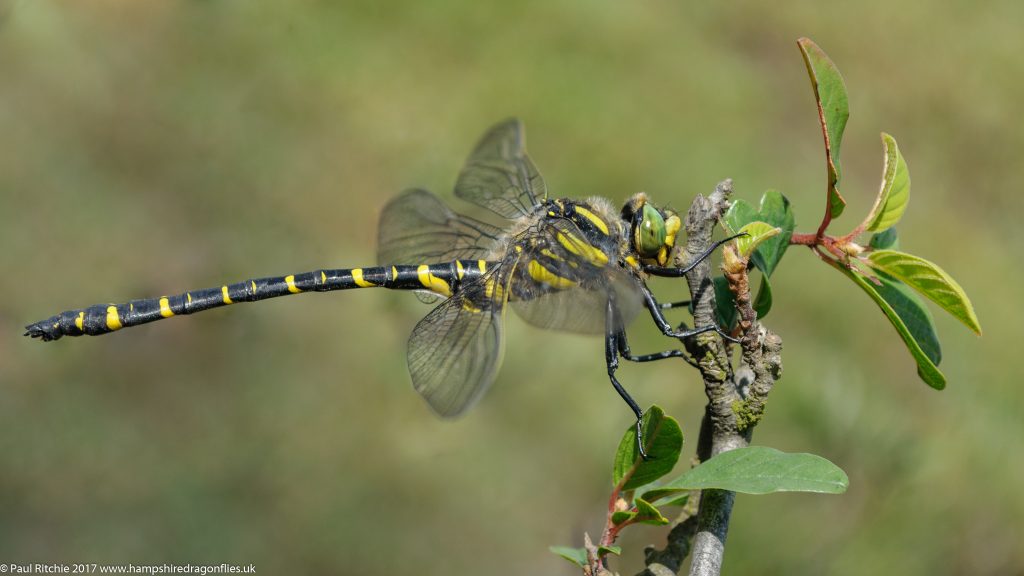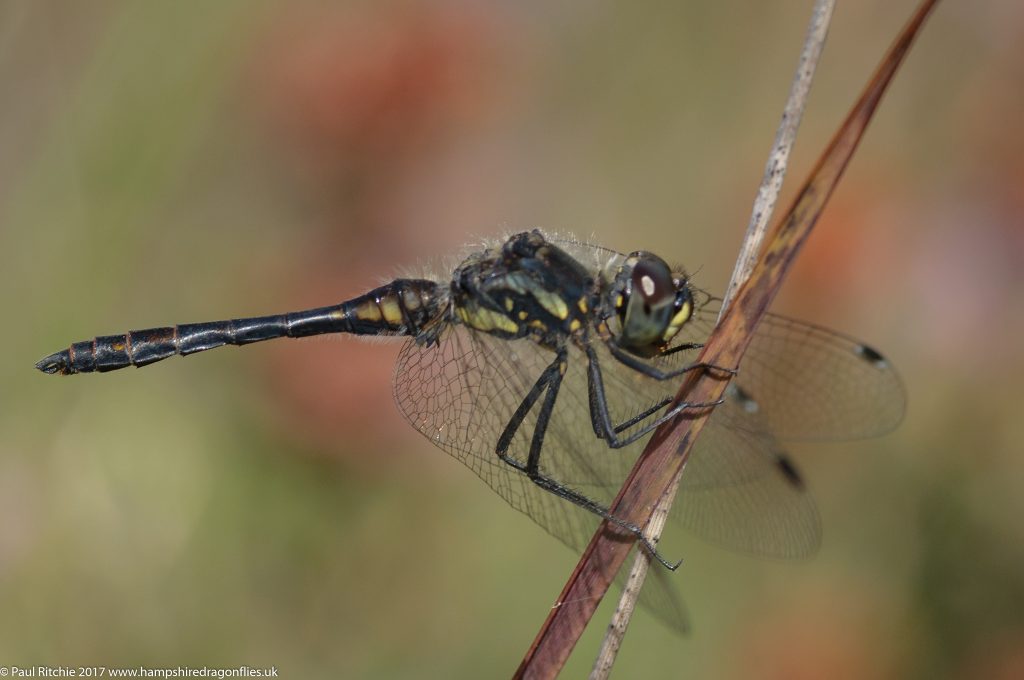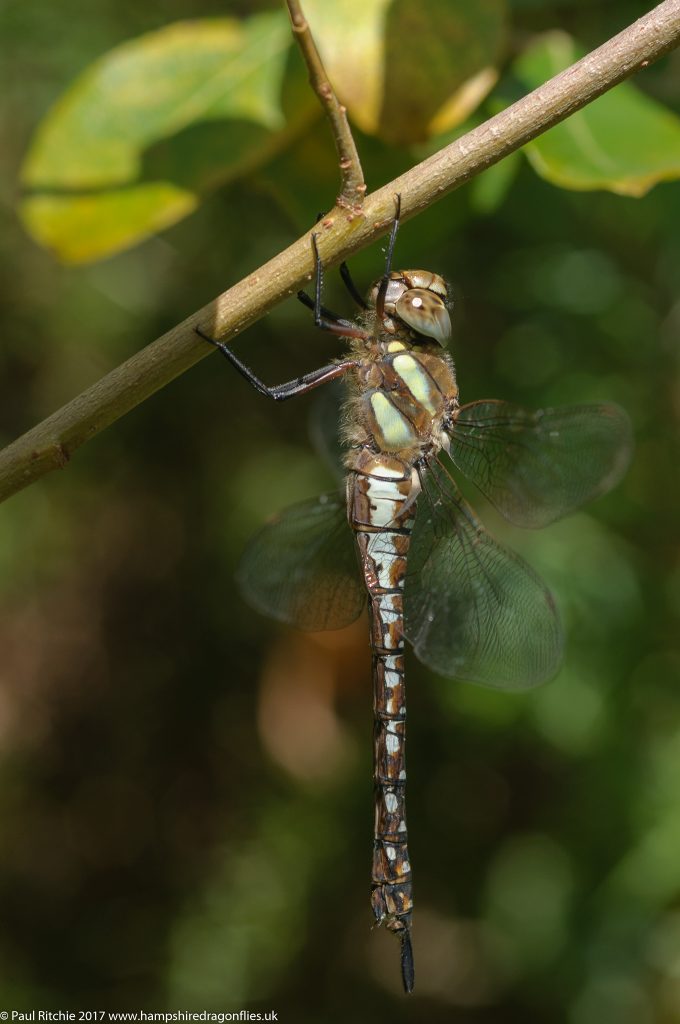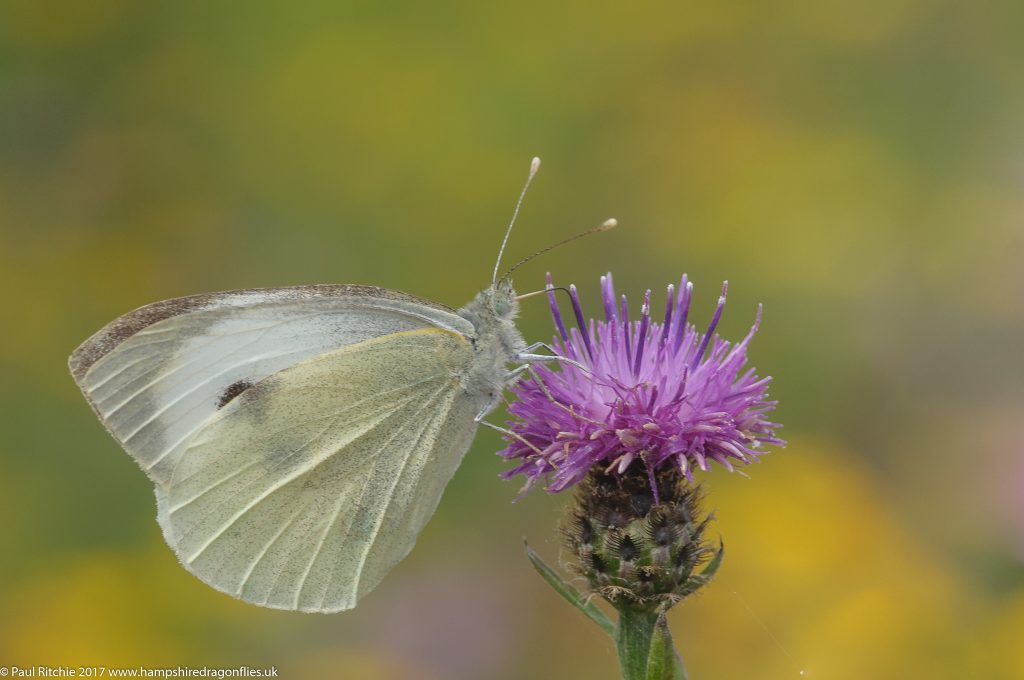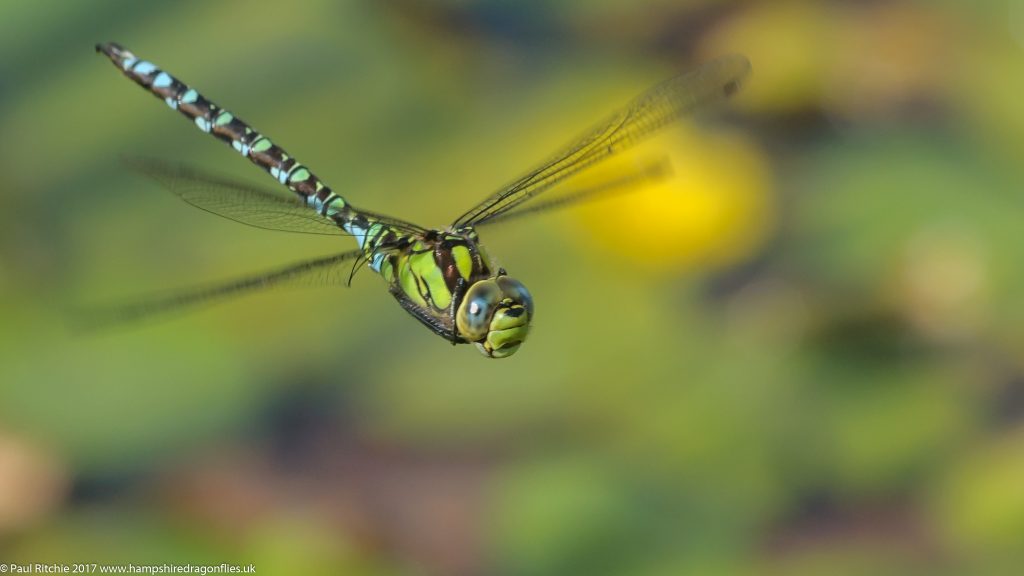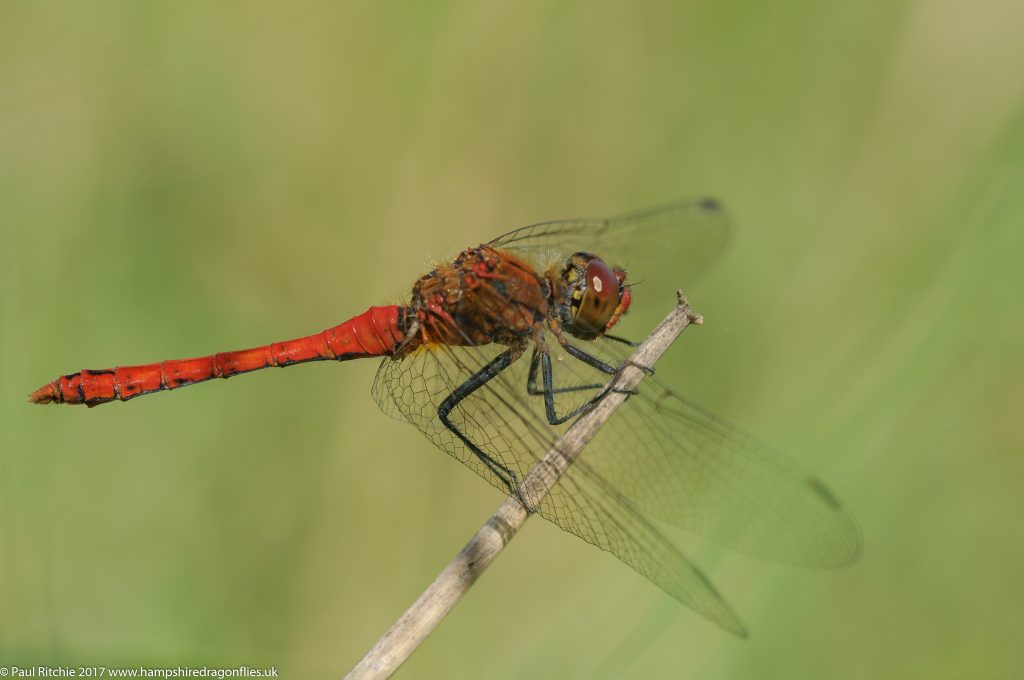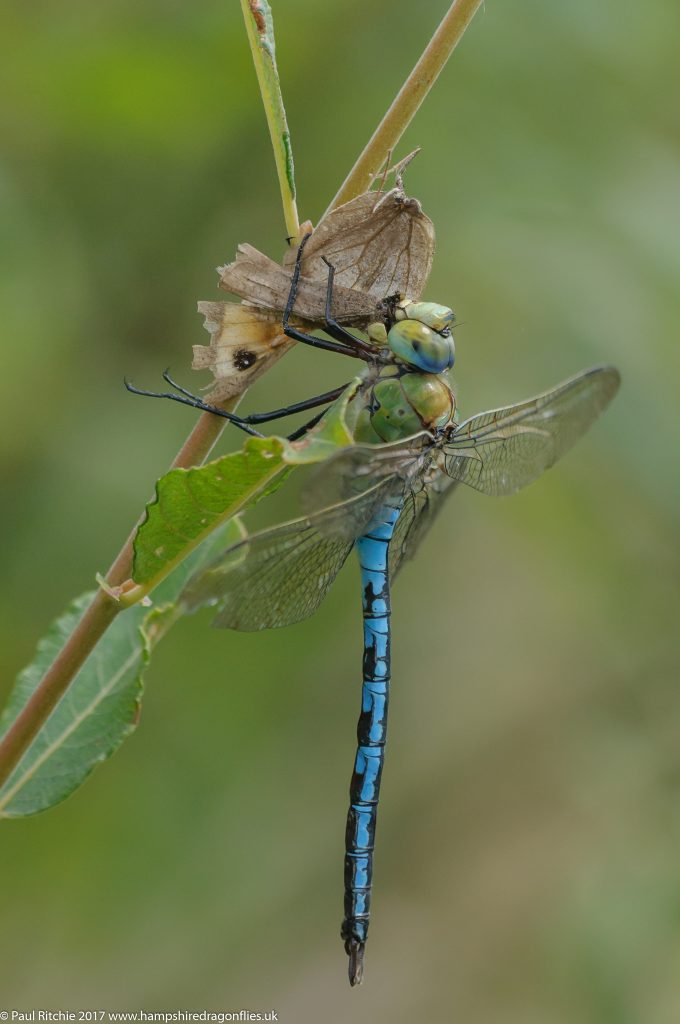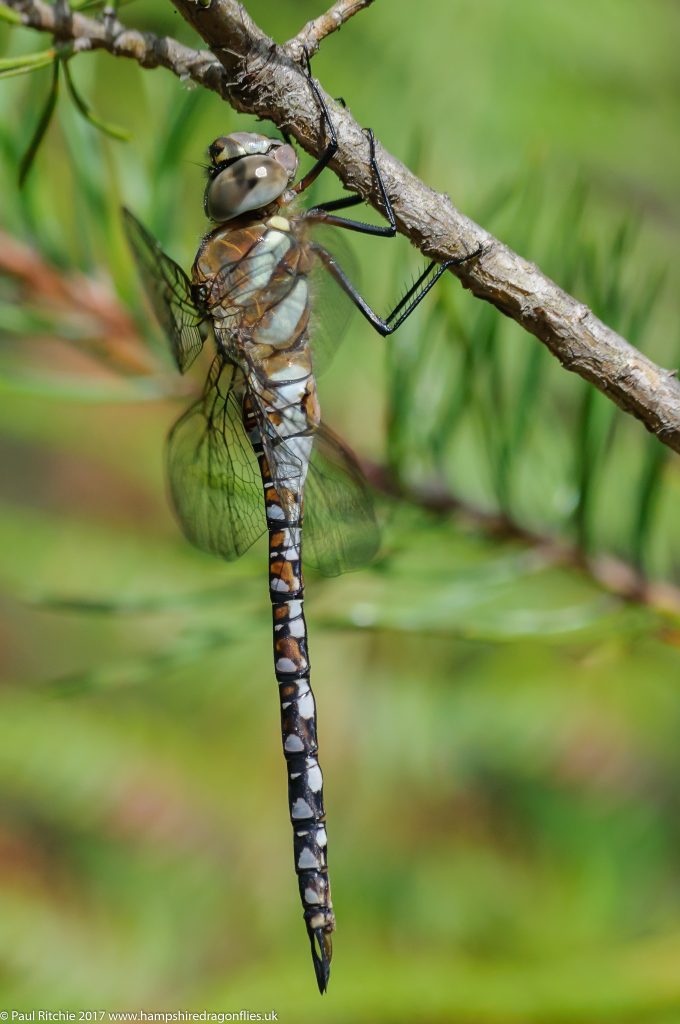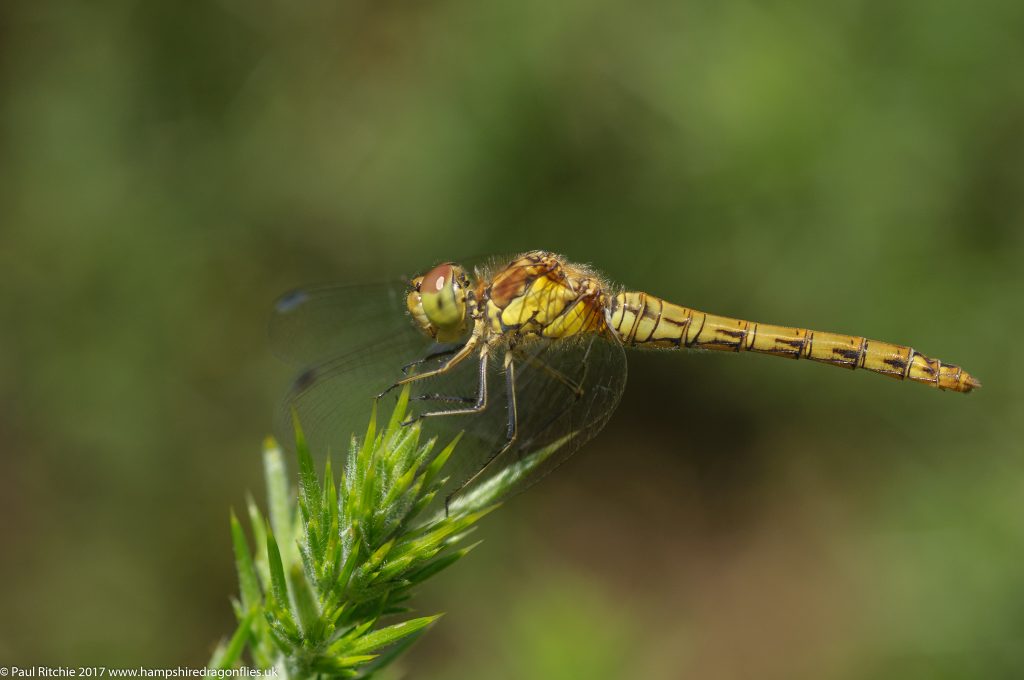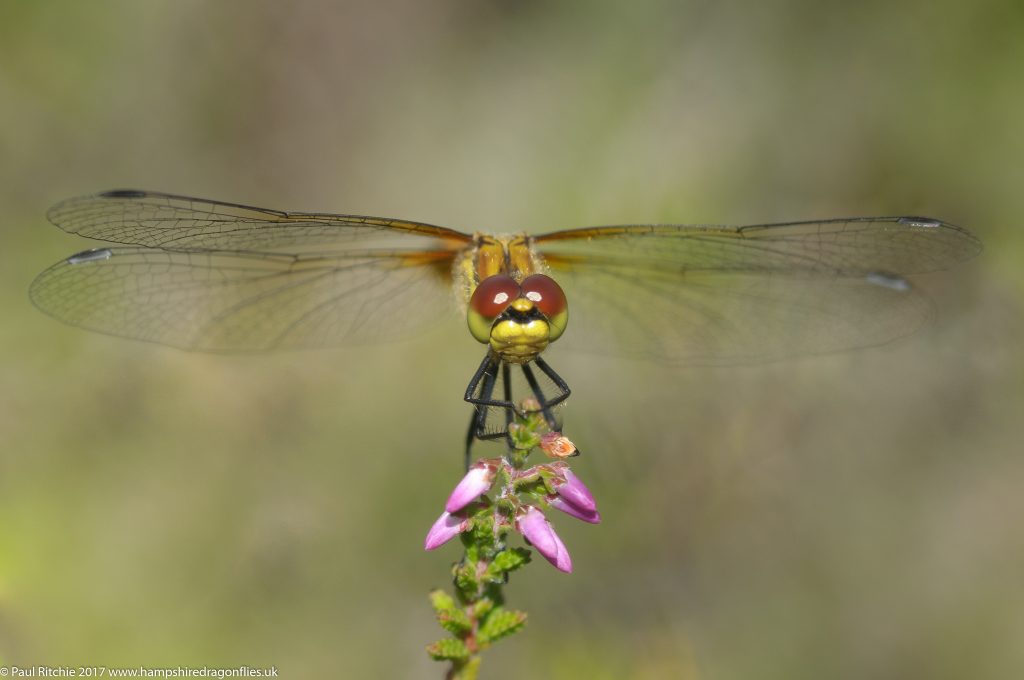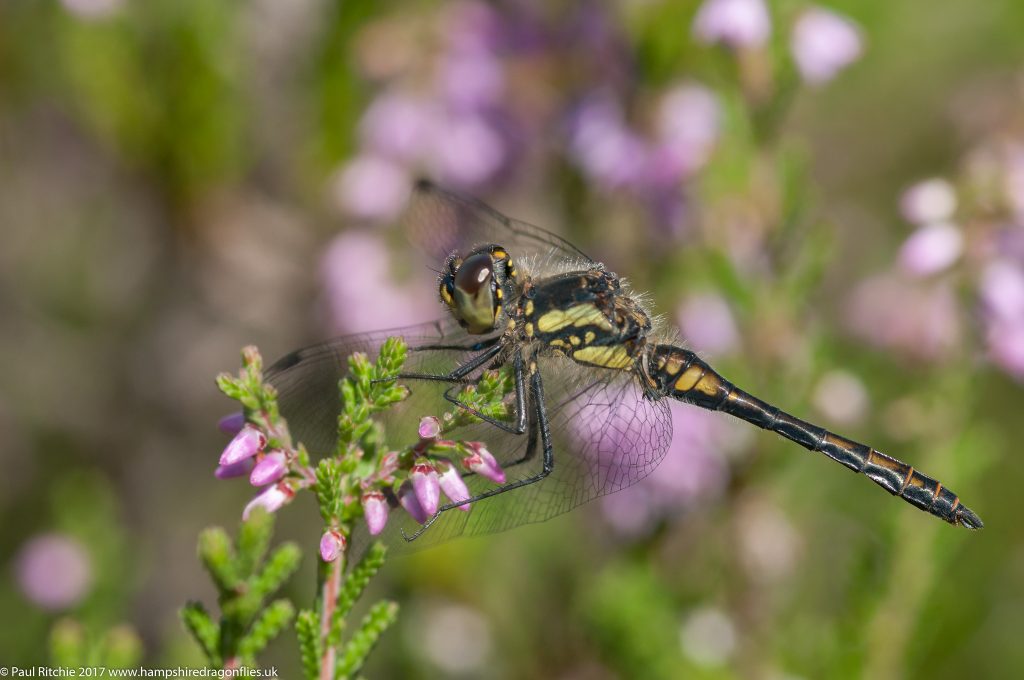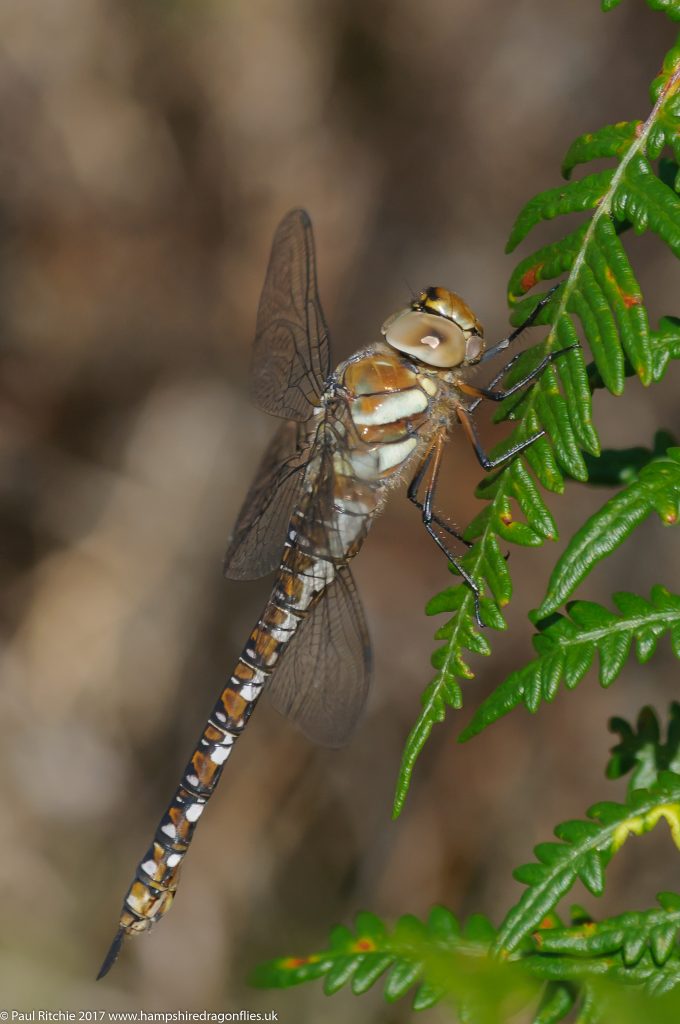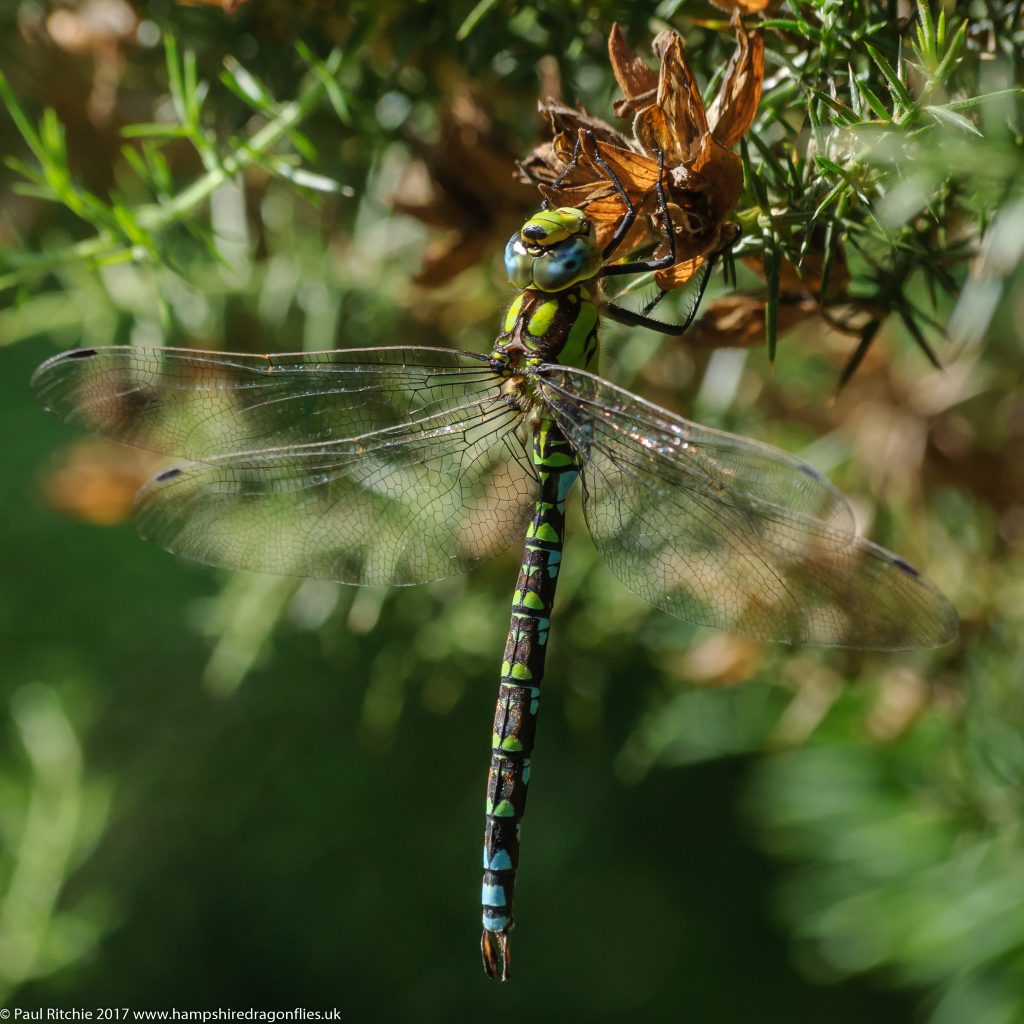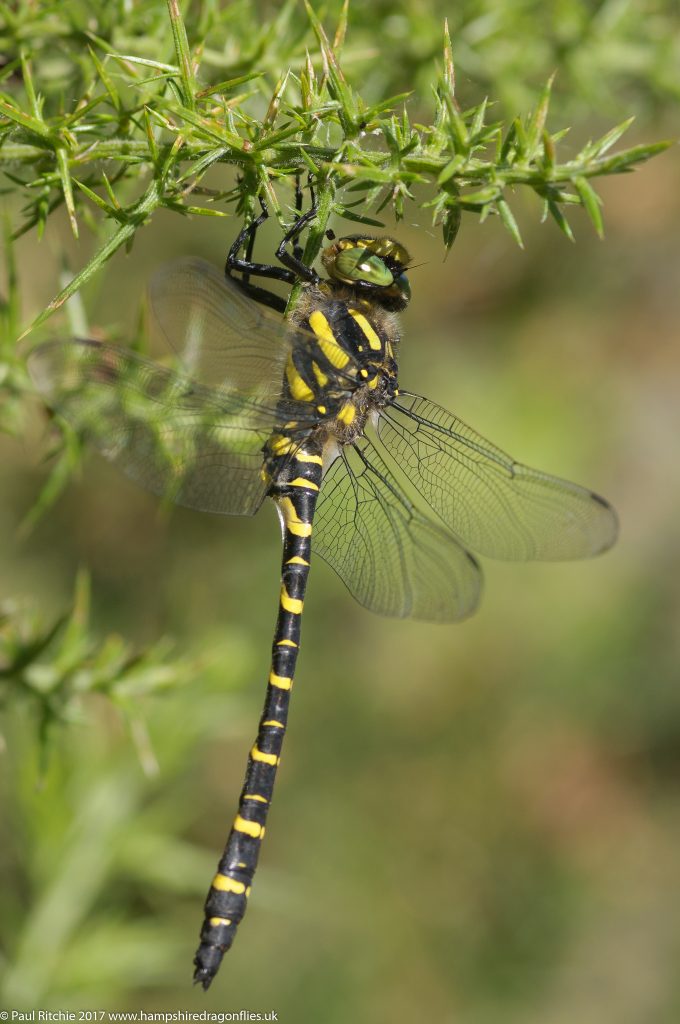Saturday 19th August
Once again a combination of unforeseen inconveniences and unsuitable weather has prevented me taking advantage of a few seasonal trips this year. I had planned sessions with the Common Club-tail, Green-eyed (Norfolk) Hawker, Brilliant Emerald at a favourite watering hole and maybe even a trip to Essex for the Southern Migrant.
With the last of our resident species now on the wing I was determined to connect with the Willow Emerald. They are spreading westward year on year, but as yet haven’t reached Hampshire. We therefore decided to pay a return visit to East Kent where friend and fellow dragonfly enthusiast Marc Heath is lucky enough to live close to a strong population of this stunning damselfly.
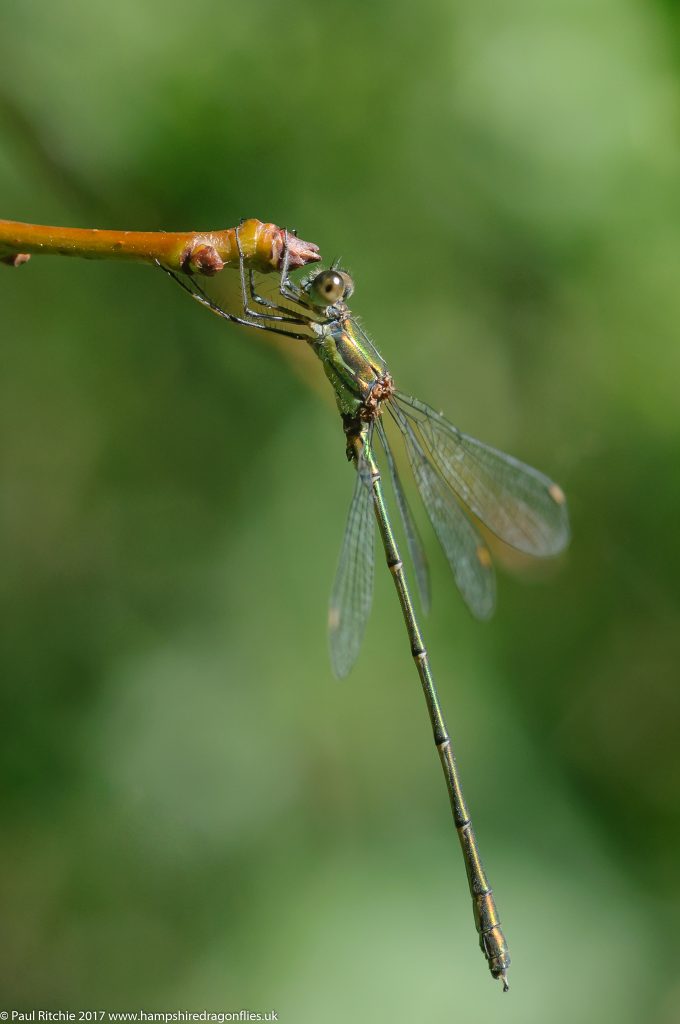
We had a three hour window of sunny intervals before the rain came, however the wind put pay to any over-water activity. Thankfully a few sunny, sheltered pockets at the edge of the woods offered just enough opportunities this visit.
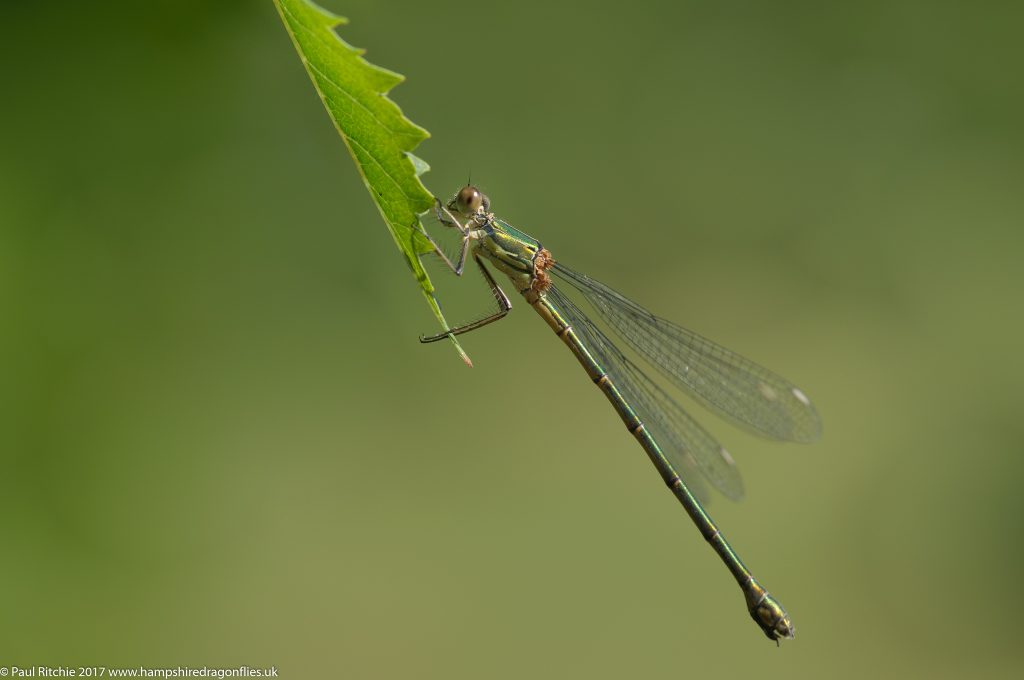
As we walked back and forth along the path I wondered just how many there were basking out of sight in the canopy, as their default direction of flight from disturbance was upwards.
The dappled light of those sunny clearings and their tendency to perch just a tad too high made for some interesting opportunities and I found myself having to work a little harder than usual to find the shot I wanted.
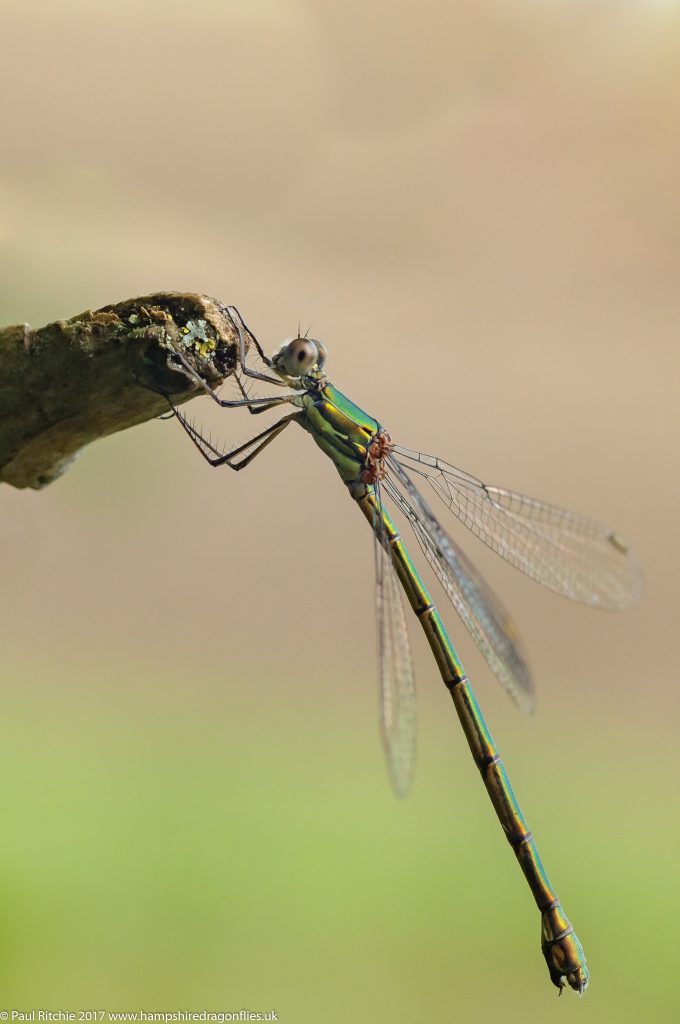
A few individuals were perching along the bank of the ditch, perhaps in anticipation of a prolonged sunny spell which didn’t materialise, and a glance north-east revealed a belt of gloom heading our way.
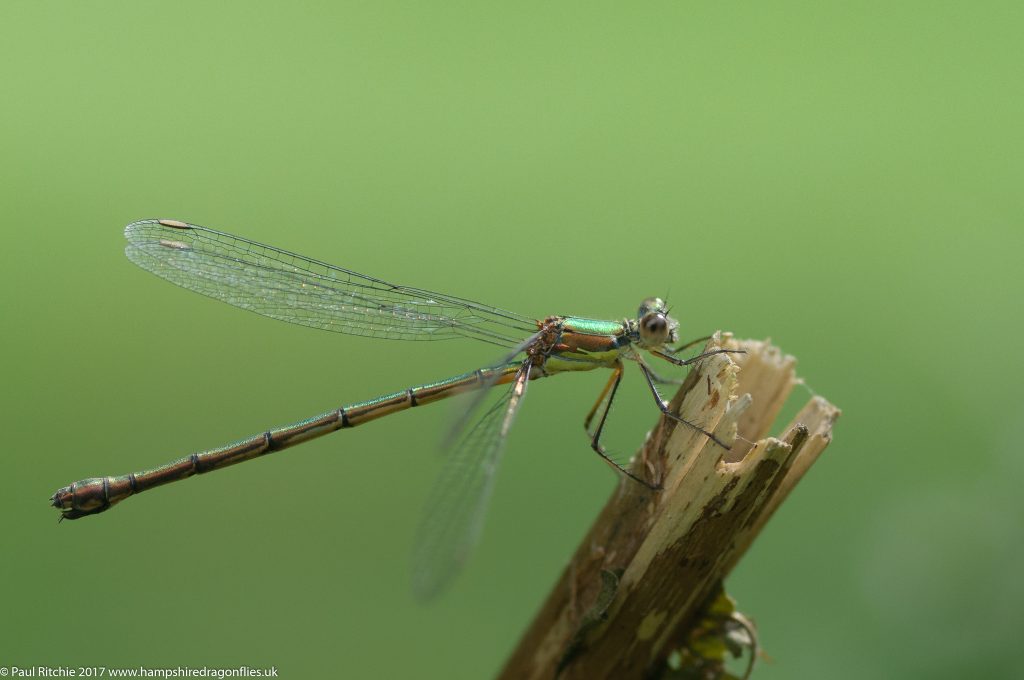
The only other notable residents here today were a male Southern, a couple of Brown and a fair showing of Migrant; the latter bouncing along the treeline feeding before resting up in anticipation of the impending rain shower.
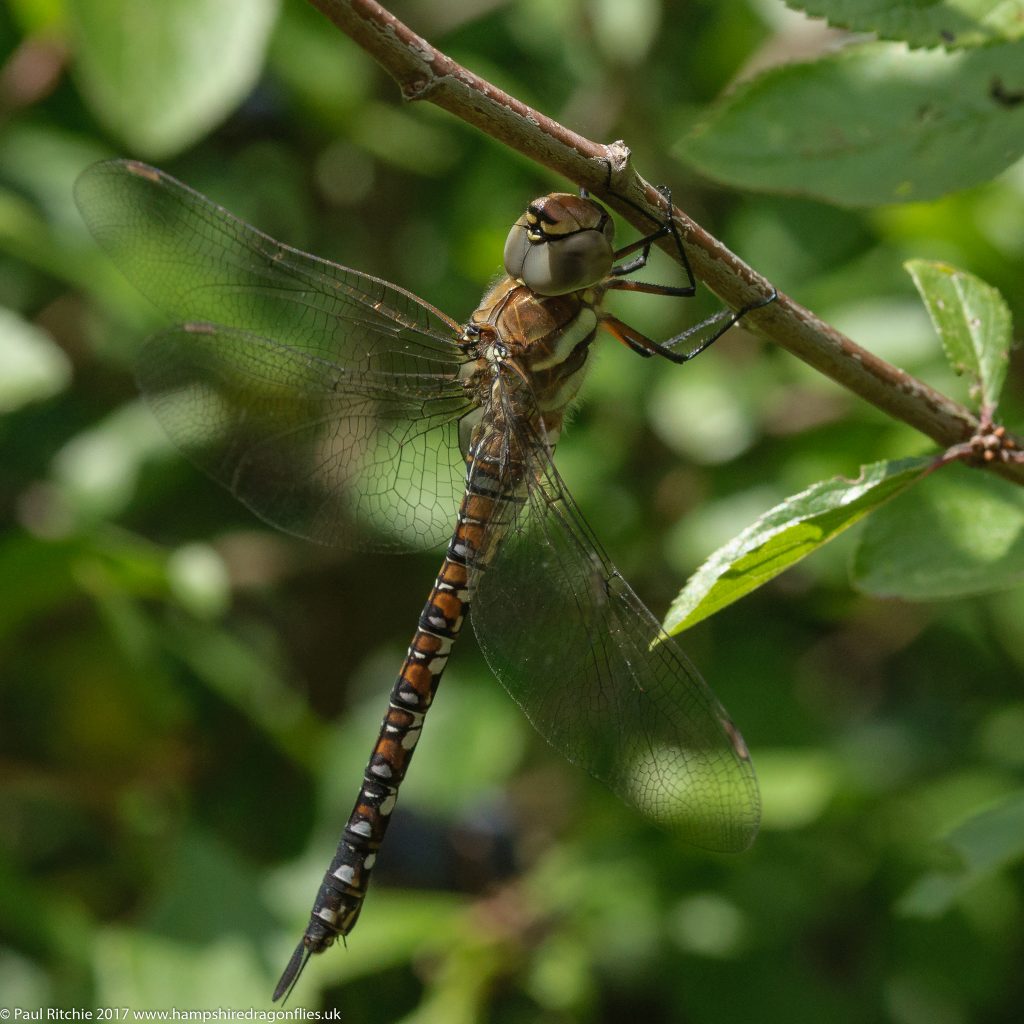
There is no better barometer than insect behaviour. Being warned of an incoming shower by their disappearance is certainly more reliable than the weather apps which seemed to be disagreeing with each other.
The rain shower and sudden drop in temperature meant we were probably done for today so we decided to visit a local hostelry for a drink and a chat before taking the long drive home.
Yes, a mating or tandem pair would have been nice but I’ve learned to become patient and have something to look forward to next time rather than having it all at once; a discipline which keeps the fire burning and desires keen.
Hopefully we can make a return journey before the main season winds down, although our early Spring risers and disappointingly wet Summer might mean we’re in for a treat come September.
Watch this space!

